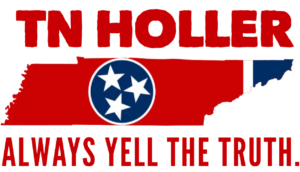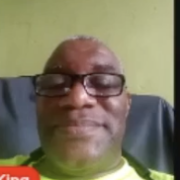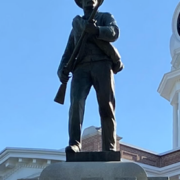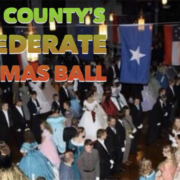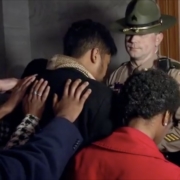Locals Protest Johnny Reb Statue on the Town Square
Protesters See Statues as a Remnant of a Painful Time
by Brendon Donoho
Murfreesboro’s town square is quite a sight to behold. An assortment of local boutiques and restaurants fill its outer rim, bustling with crowds of locals and visitors alike while at its core sits a magnificent courthouse which has commanded this location since 1859. The Courthouse sits as the central jewel of the square with each of its corners adorned with a unique monument.
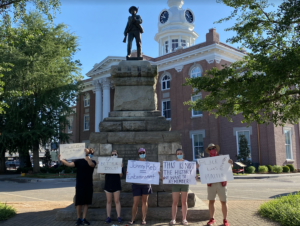
There is the monument to Revolutionary War General Griffith Rutherford in the Northwest, a rather touching tribute to veterans of the two World Wars in the Southeast, and a simple but elegant pillar in the Southwest commemorating the city’s short time as the Tennessee state capital. Recently, however, it’s the Northeast corner of the courthouse grounds which has found itself at the center of public debate.
On Friday, a handful of Murfreesboro locals gathered on the square to once again ask for the removal of the city’s statue and monument honoring “the valor of Confederate soldiers who fell of the great Battle of Murfreesboro.” Incidentally, nearly 900 Union Soldiers also died in this combat, though they’ve been left mysteriously unnamed on this quite garish memorial. Near the statue, there is also a tablet teaching readers about “The Square During Occupation,” bizarrely referring to the American military as an occupying force which was bravely defeated by the Confederates.
In addition, the courthouse itself is dedicated, by a plaque near its front door, to General Nathan Bedford Forrest, a Confederate General who is often also credited as the first Grand Wizard of the Ku Klux Klan. This plaque was placed in 1912 by the Daughters of the Confederacy, a Nashville-founded group which venerated the Klan and mass-produced Confederate statues at the turn of the century in support of Jim Crow laws.
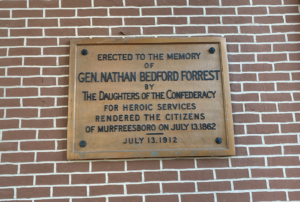
Michael Sangetti, who planned the day’s protest, had quite a bit to say about the statue. “We definitely want to draw attention to the statue here. It’s representative of the laws that we still use today to oppress black people in our current policing system… It is a symbol of intimidation and hate and not history.”
Sangetti started his protest on Thursday and doesn’t plan to stop until he’s seen the change he’s asking for. “I plan on coming as many days as possible. I’d like to stay out here, honestly, until the statue comes down. Until the mayor and city council can address the needs of the Black community here in Murfreesboro who are over policed and over arrested.”
Ultimately, he sees these statues as the most public face of the underlying systemic racism which has plagued the United States, and particularly the South, since before the nation’s founding. “Without saying anything, it is a visual representation of white supremacy and hate…I’ve heard from my black friends that they would notice it every day and every time they pass by it. My aunt would notice it every time she was on the square.”
Sangetti was joined on Friday by a handful of Murfreesboro residents who felt it important to make their own voices heard.
Darla Gates said “I’m just gonna use my white privilege to stand up and say that this is wrong. That’s what it’s gonna take. All of us supporting the Black and Brown communities for them to know that this has got to change.”
The protesters are asking for the removal of the statue and other Confederate monuments around Murfreesboro as the first step toward reconciling the deep history of racism and oppression which unfortunately checkers this nation’s past. Friday was the second day of protests and, according to the protestors, the reaction has been mostly positive.
“I think the general response is about Sixty-forty. Sixty percent are usually behind it.
It seems like older people are not so much behind it, younger people are.” Said Sangetti, “We’ve had people bring us water today. Some younger girls came and offered to buy me ice cream. I had one guy come and shake my hand yesterday.”
While the protestors are correct to point out the history of systemic oppression and racism which lies at the bedrock of our nation, I couldn’t help but think, as I spoke to the small, sign holding group on the town square, that there is also another tradition here in America. This is the tradition at play when a handful of local citizens decide that a decision by their city has upset them and find their way to the streets in protest. It’s the tradition of Dr. Martin Luther King Jr., of Malcolm X, of Woodie Guthrie, George Meany, and every other American who has taken to the streets in an act of radical democracy to make their voices heard.
This is a practice which has finally made a return to modern American society, and it is alive and well in Murfreesboro, as it is everywhere else.
